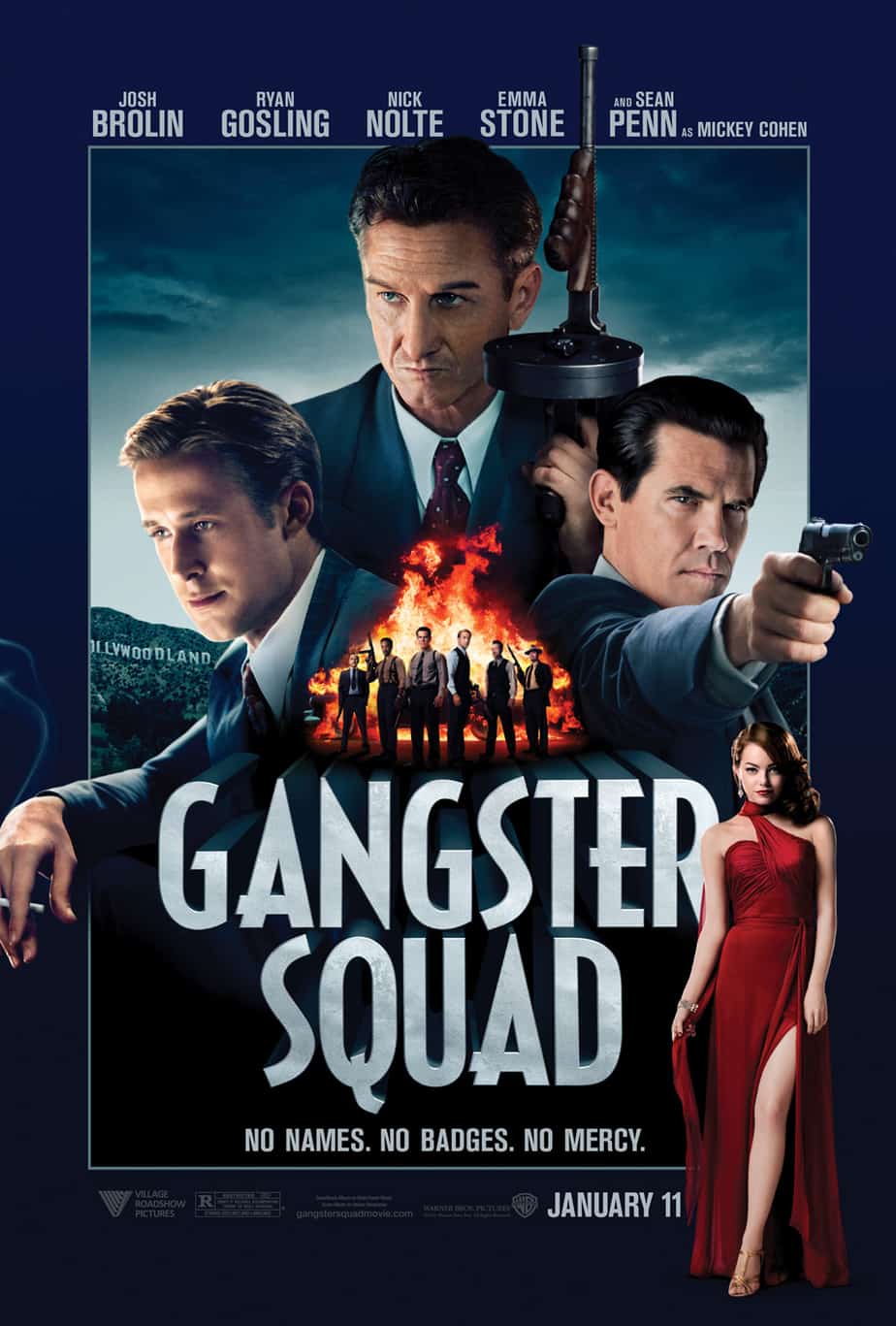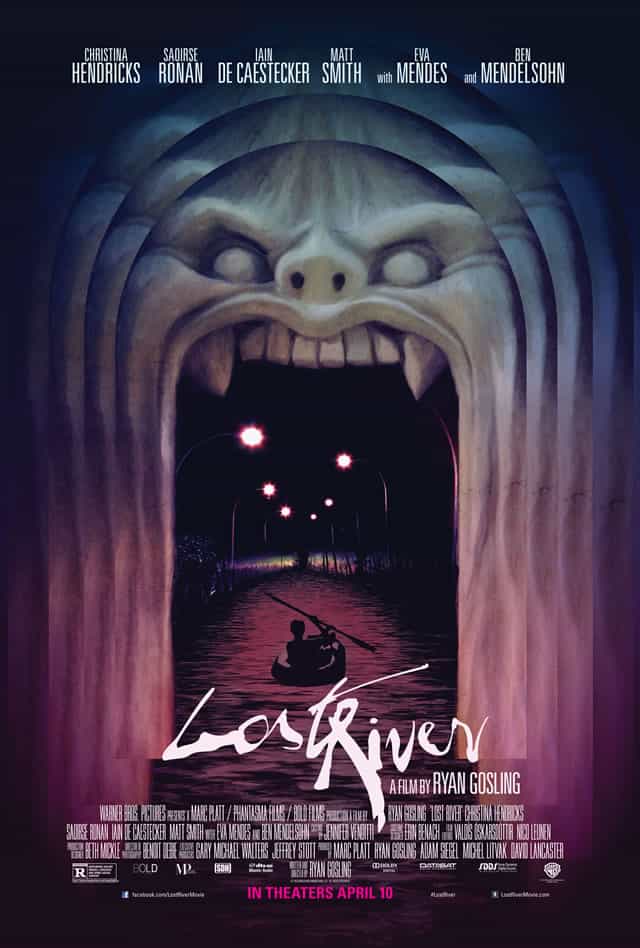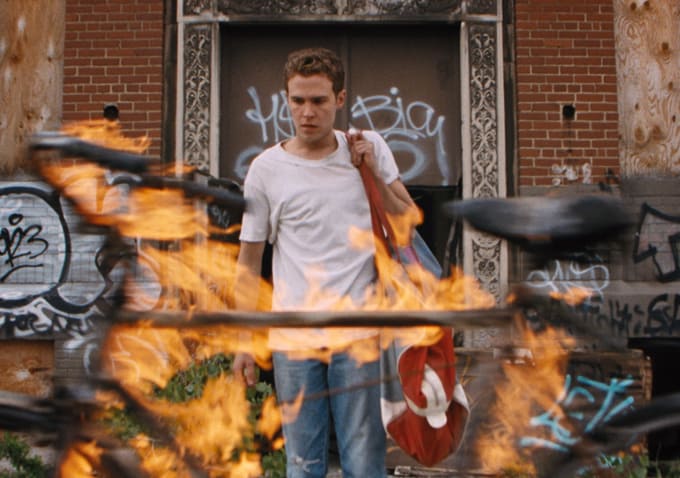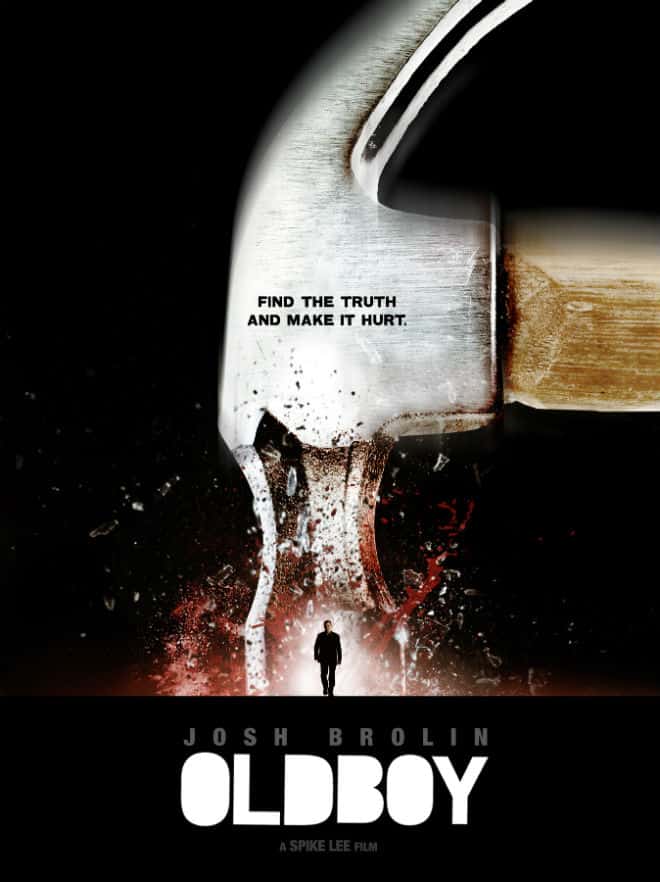
Movie Review: ‘GANGSTER SQUAD’
It ‘s either a sick joke or an unfortunate coincidence that both Gangster Squad and the 2008 film Milk both feature Josh Brolin going after a prominent historical figure in California played by Sean Penn. Anyone who has seen a photo of Sean Penn in this new 1940’s flick knows that the tone of the two films couldn’t be any further from one another. Maybe Penn might be in on the joke. The characters in both films are real-life figures, but where his portrayal of Harvey Milk is grounded in sincerity and reverence, his decision to play L.A. gangster Mickey Cohen with as bloated of bravado as the prosthetic nose on his face doesn’t quite match up with everyone else in the film. And so it seems fitting that Gangster Squad suffers from both bad coincidences and a misguided tone that never finds its way.
In 1947, former boxer turned gangster Mickey Cohen continues to gain a strong power over the city of Los Angeles. Officer John O’Mara (Josh Brolin) is assigned by the chief of police (Nick Nolte) to assemble a unit with the sole task to stop the gangster from gaining anymore of a hold on the corrupt city. When one of the cops on his team (Ryan Gosling) falls for Cohen’s main squeeze (Emma Stone), the relationship could put the whole team in danger.
Gangster Squad is about as generic and nuanced as the title would suggest. Ruben Fleischer has delivered a paint by numbers 1940’s gangster piece that knows it’s not in the same league as such heavyweights as Chinatown or even such modern classics like L.A. Confidential, and instead, attempts to just entertain through the use of glamorous costumes and stylized photography that is reminiscent of what the director showcased in Zombieland. There’s a polish to the film that makes the product almost too slick and commercial looking. Everyone has the appearance of wearing costumes, and in some cases, these costumes don’t even seem to fit quite right. While the overly polished look of the film is consistent from start to finish in the sets, the costumes, and the art direction, the same cannot be said about the film’s tone. The tone goes back and forth between tongue in cheek to serious drama every five minutes. Much of this can be attributed to the two main leads, Josh Brolin and Sean Penn. Their drastically different performance styles makes jumping from one sequence to the next very jarring. Sean Penn looks and acts as if he is performing as a villain in Dick Tracey, and Brolin approaches the character in such a serious and stiff manner that you fear he’s going to snap if he gets punched too hard. Other actors fall somewhere between the two extremes or are grossly underused. Emma Stone is someone who I find captivating to watch on screen due to her beauty but also for her charming performances. Here, she is asked to deliver a few smoky looks, fill out some vintage gowns, and deliver about ten lines that could have been improvised for all I could tell. Fans of current heartthrob Ryan Gosling may find his low key but squeaky character voice distracting if not inconsistent. I never really felt that all of these recognizable names and faces fit into the film. It’s as if they all decided to play dress-up together. The feeling is similar to what the 1988 movie Young Guns did with the western genre; the film comes across as a bunch of 80’s stars playing cops and robbers. Gangster Squad does the same for 40’s gangster films.
One thing that Gangster Squad gets right is delivering some hard-hitting action scenes. Not only do a couple make a lasting impression, but they gloriously spotlight the bloody results of this action. Gangsters are torn in half, fingers are severed, and people are pummeled in hand to hand fights; and this doesn’t even take into account all those that are shot –up in the shoot-outs. Some may remember that a certain theater sequence was cut from the film following the unfortunate tragedy that occurred in Colorado. Fear not, as the sequence now in its place – a tense game of cat and mouse set in a bustling Chinatown – is one of the highlights of the film. The only sequence that tops that is one featuring a break-in at a nightclub called Slapsy Maxie’s. Before everyone jumps on the name for sounding silly, it should be noted that that is actually the name of a real club from the 1940’s. It’s a sequence that seems to riff on the infamous back door, extended shot Scorsese did in Goodfellas. However, this one features a lot more violence inter-cut with a cutesy showgirl singing a bossa nova jazz number. Given the flashy setting, the precise editing and stylized photography seem all the more appropriate.
Brolin leads a conveniently multi-cultural squad. Characters always show up at just the right time; Brolin and Anthony Mackie’s first meeting is so unintentionally hilarious. And these are just a few of the many coincidences in a film that features them almost as often as cheesy one-liners. Fans of 1940’s gangster films will experience at least some level of fun with the film. What that level is will fully depend on if you can turn off your brain for the almost two hour run time and just soak in a film that is inundated with period kitsch. Gangster Squad is not a complete crime against the viewer, but it never fully arrests the viewer either.



